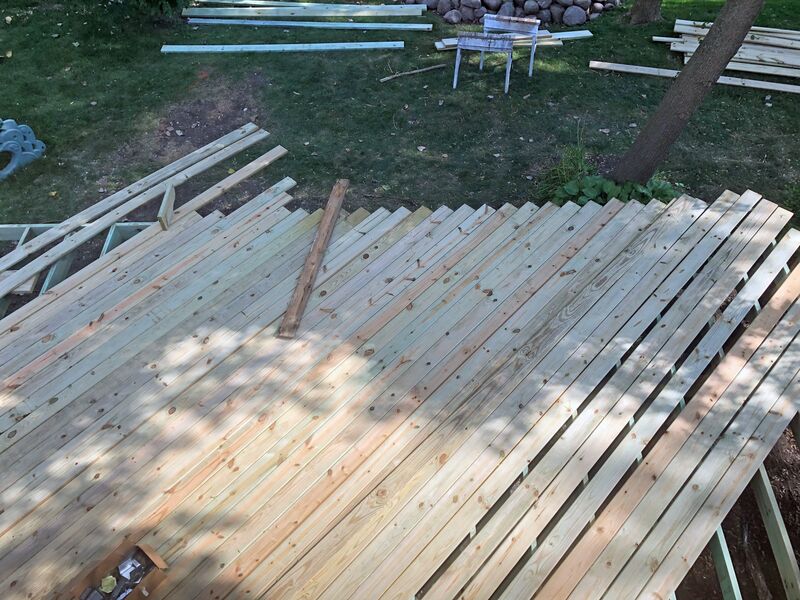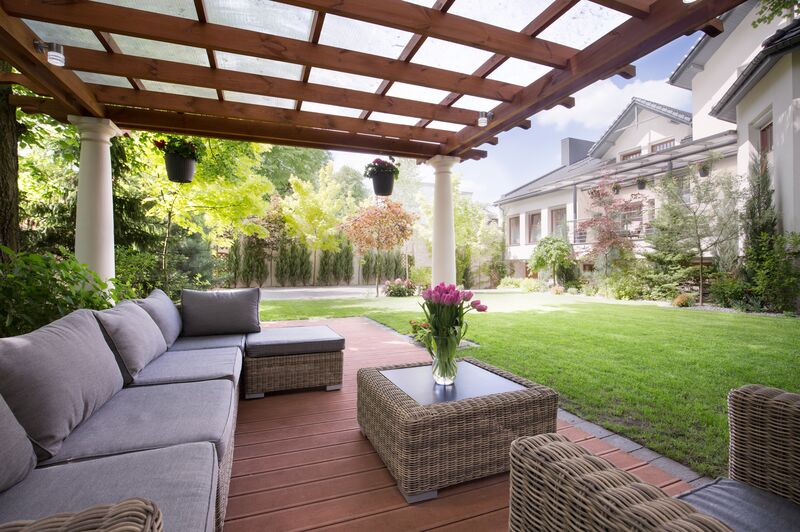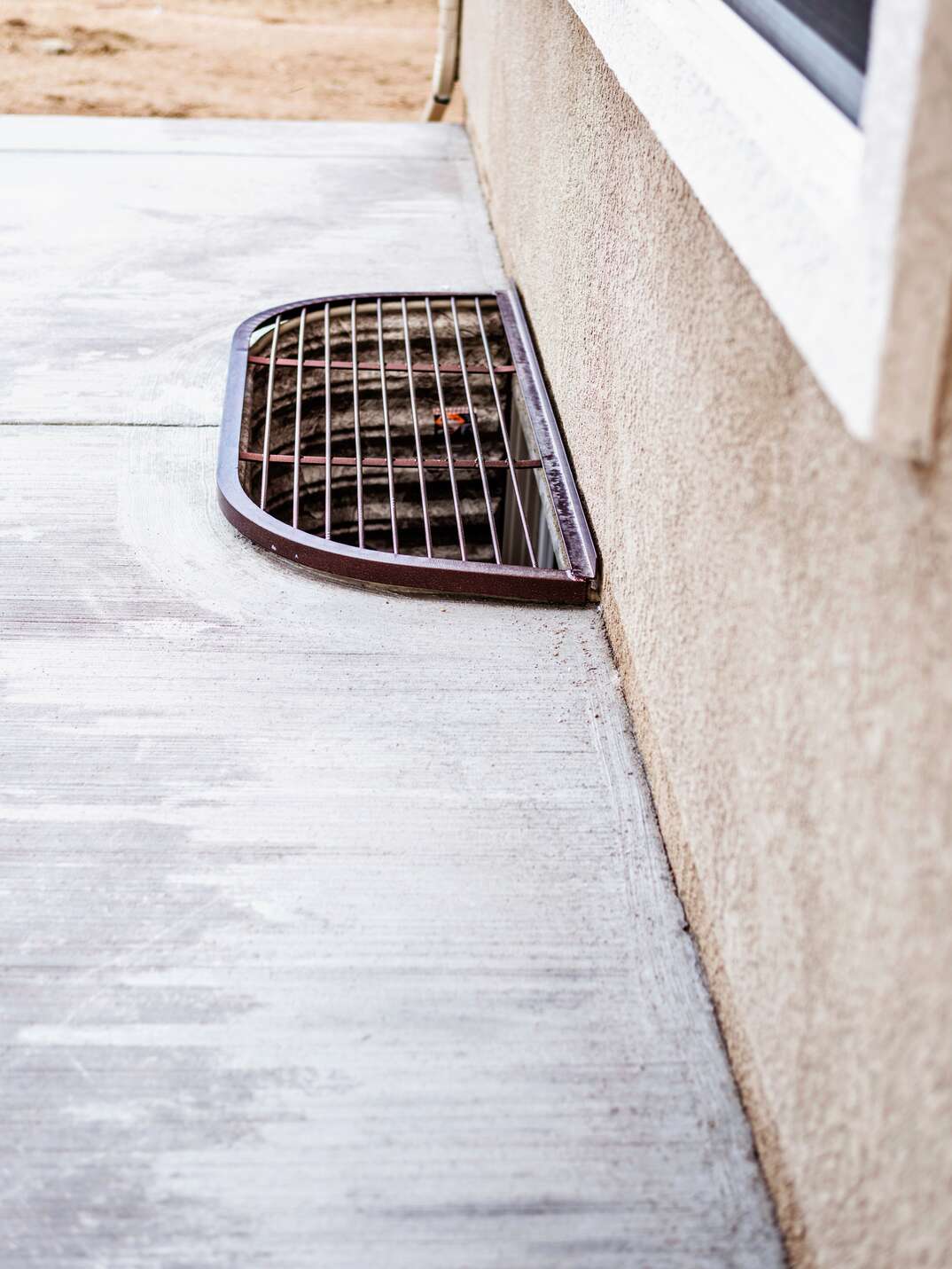How Much Does It Cost To Build a Deck?

If you don't currently have one, adding a deck is a great way to add usable space to your home. If you enjoy having friends and family over, a deck is the perfect place for people to gather and socialize. Decks can also make your home feel larger, giving you a new spot to kick back and relax. What's more, a deck adds measurable value to your house, with homeowners able to recoup about 70% of building expense when it comes time to sell. That said, building a deck isn't exactly cheap — and, in fact, can get expensive quickly if you aren't careful.
This May Also Interest You: 5 Ways to Decorate Your Outdoor Space
There are a number of factors to consider when budgeting for a new deck. By keeping these in mind, you can be on the way to enjoying your new favorite spot at home.
The Basics
The average price range of building a new deck in the United States can be anywhere between $4,000 and $11,000. Including materials and labor, a standard deck will cost roughly $30-$60 per square foot. That means, for a standard 14 x 20 foot deck, you can expect to pay around $6,000.
Before hiring a contractor though, be sure to get a few estimates, as prices can vary greatly. Of course, these prices also depend on a range of factors, including size, design and the type of materials you choose to build your deck with.
Material type may be one of your first considerations, and you have a few different options to choose from, depending on budget and desired features. Here are four:

1. Wood Decks: The Standard
Pressure-treated wood is generally considered the standard material used in decking. Although a common choice among homeowners, a wood deck does require yearly maintenance to preserve its integrity and good looks.
For example, a wood deck needs to be sealed and treated once a year to avoid unnecessary splintering or rotting. Splintering wood can be pretty annoying and even downright dangerous to walk around on, so, if you choose wood for your decking material, make sure you can handle the annual upkeep. Additionally, wood can be a haven for wood-boring insects like carpenter bees, ants and even termites. Without proper preventive measures, these insects can ruin your deck in a relatively short amount of time.
The type of wood also plays a factor in how much your deck will cost. Using high-quality, exotic woods can drive up costs quickly. Ipe wood, a popular exotic hardwood used in decking, can cost upwards of $20 per square foot — just for the material itself. Redwood is another premium wood that's gaining popularity in recent years. Like other premium hardwoods, it offers an alternative to pressure-treated wood. A properly maintained redwood deck might last more than 30 years with few signs of wear and tear.
2. Composite Decks: Eco-Friendly
Another popular option for decking material is composite decking. Composite material is typically made out of recycled plastics and wood byproducts. What's great about composite decking material is that it doesn't rot or split ... ever. Additionally, composite material lasts longer and doesn't require nearly as much upkeep and maintenance as standard wood decking. Once your composite deck is built, all you have to do is use it.
As an added benefit, composite decking can be more eco-friendly than using pressure-treated wood. For example, composite decking uses wood byproducts and recycled plastics; some brands, such as Trex, use up to 95% recycled materials. Additionally, these planks never need to be stained, painted or sealed, limiting toxic off-gassing from harsh chemicals.
As you might expect, the inherent benefits of composite decking make it a pricier option. For example, Trex, one of the leading brands of composite decking material, can cost up to $12 per square foot compared with $3-$7 for wood planks. On average, you can expect to pay about $20,000 for a 16 x 20 foot composite board deck.
3. Vinyl Decks: Maintenance-Free
One decking material option that's been gaining popularity in recent years is vinyl (PVC) decking. Short for polyvinylchloride, PVC is an extremely common plastic, used in everything from pipes to wrapping material and other building products. Like composite decking, PVC decks are virtually maintenance-free. Aside from standard cleaning, these decks don't need painting, staining or sealing.
Although PVC decking maintains a sleek appearance year-round, the planks can expand and contract as the seasons change, eventually causing some of the fasteners to come loose. Like composite material, the upfront cost of a vinyl deck is typically more expensive than that of a wood deck — but the absence of a need for regular maintenance makes the upfront cost the only major expense associated with this type of decking. Generally, vinyl decking costs about $10 per square foot.
4. Floating Decks: More Affordable
A far more affordable option for those interested in adding a deck to their home is a floating deck. Floating or free-standing decks aren't attached to any structure. They're built on top of the ground. Because of this, they don't require any frost-depth footings or concrete posts, making them generally a lot easier and quicker to build.
For a 10 x 10 foot floating deck, you can expect to pay in the ballpark of $600 for materials — a relative bargain. Even better, floating decks don't necessitate that you acquire a building permit to start your project, making them a DIYer's dream come true.
DIY: One Way to Save
Labor costs make up about two-thirds of the total cost of adding a deck to your home. One sure way to save some cash is to tackle the deck project yourself. Building a deck yourself is not as hard as you might imagine. With the proper tools and a little knowhow, you can construct your own deck in a short amount of time — provided you have a solid plan of attack.
Before you start, it's important to check with your local building department or homeowners association to obtain any necessary approvals and permits that you may need in order to build. Some elements of the project might involve an inspection, so be sure to plan your work around that eventuality.
You'll also want to consider the size of your deck project. Generally speaking, a deck should be wider than it is deep — some standard measurements for decks are 14 x 20 feet or 16 x 20 feet. In any case, you want to make sure there's plenty of space for outdoor furniture and for people to move around and enjoy themselves. You also want to make sure you consider the design: Decide if you'll need steps and, if so, how many. Also, be sure to keep railings and handrails away from doors and windows, as that can cause major functional issues.

Plan Your Deck
Although having a basic understanding of the associated materials and costs can help as you begin to envision your new deck, the most important thing you can do before hiring a contractor — or building it yourself — is to create professional plans for your project. Luckily, there are several helpful online tools that can help create plans and accurately estimate the price.
Home Depot's Do-It-Yourself Deck Designer program allows you to choose from 70 deck templates and adjust them to your specific needs. The program will also generate and insert a three-dimensional image of your deck design into a picture of your home. What's more, the tool will calculate and print a list of every tool and material you'll need to complete the project — incredibly helpful if you choose to do the work yourself.
For quick estimates of decking costs, several websites offer decking calculators where you can simply enter the surface size of your deck and other preferences like the size of your boards and how much gap you'd like between each plank. Although not perfect, these calculators can give you rough estimates of costs and materials.
Enjoy Your Deck!
Building a deck enhances your home in so many ways. It increases the livable space of your house and provides an open-air space to entertain guests. Moreover, a deck can add substantial resale value and aesthetic appeal to your home. By carefully considering what kind of deck you want to build — and whether you want to build it yourself — you can add a deck to your home that's both within your budget and a valuable addition to your house.
And, while you're increasing the value of your home, you might also want to think about protecting it. Being prepared with a home repair plan from HomeServe helps you stay ahead of home maintenance costs and fixes. Once you have a plan in place and a covered issue arises, you can simply call the 24/7 repair hotline. A local, licensed and highly trained contractor will be sent out to you to get the job done to your satisfaction.

.jpg)
